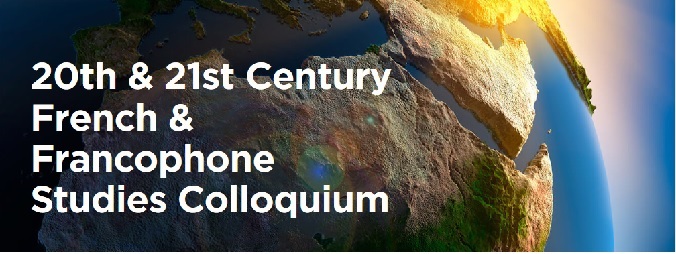Modern Languages and Literatures, Department of

20th and 21st Century French and Francophone Studies International Colloquium
Date of this Version
4-2020
Document Type
Article
Citation
20th & 21st Century French and Francophone Studies International Colloquium, University of Nebraska-Lincoln, March 26-28, 2020. https://digitalcommons.unl.edu/ffsc2020/
Abstract
In novels that stage migratory pathways, the exploring characters can perform circulation through different channels and processes, without necessarily operating a physical movement. A geographical and a corporeal process exist, but even when the concrete, physical exploration stops, it is somehow also both lived, experienced, reconstructed and imagined differently through the body and through corporeal exploration. In this paper, I argue that embodied memory can circulate through points of entanglement without any process of movement physically occurring, and these points of entanglement can all be observed interacting in the body of the migrant. For instance, sensations enable the characters to travel through space and time, by connecting them to specific memories.
In both Marie-Célie Agnant’s La Dot de Sara (1995) and Gisèle Pineau’s L’Exil selon Julia (1996), the protagonists are middle-aged Caribbean women who migrated to Canada and France respectively, to help their children raise their own children. Agnant’s protagonist Marianna leaves Haiti to help her daughter Giselle raise baby Sara in Montréal. Pineau’s protagonist Julia is removed from her home in Guadeloupe by her son, Maréchal, and her daughter-in-law, Daisy, who are worried about Julia’s abusive marriage. She then takes care of her grandchildren in their new home in France, and forms a particular bond with her granddaughter Gisèle. The sensation of exile is present in both novels, as Marianna and Julia struggle to live without their respective islands of origin. However, an embodied process of memory and sensorial recollection will allow them to experience the land that they have lost, and will enable them to transcend spatial limitations by transporting them to a sensorial and memorial plane that connects them to their lands of origin. As the two women navigate their new spaces, they find and create correspondences between Haiti and Montréal, and between Guadeloupe and France, thus bridging the gap between here and there, and between then and now. I have split this presentation in two parts: first, I’ll talk about the acts of exploration that the two main characters carry out in their exiles, and how they negotiate and cope with their situation of displacement. Then, I will develop the question of memory as it comes attached to land, and how the memories in question allow their explorations to transcend space and time.
Included in
Comparative Literature Commons, French and Francophone Literature Commons, Other French and Francophone Language and Literature Commons


Comments
Copyright © 2020 Marie Paillard